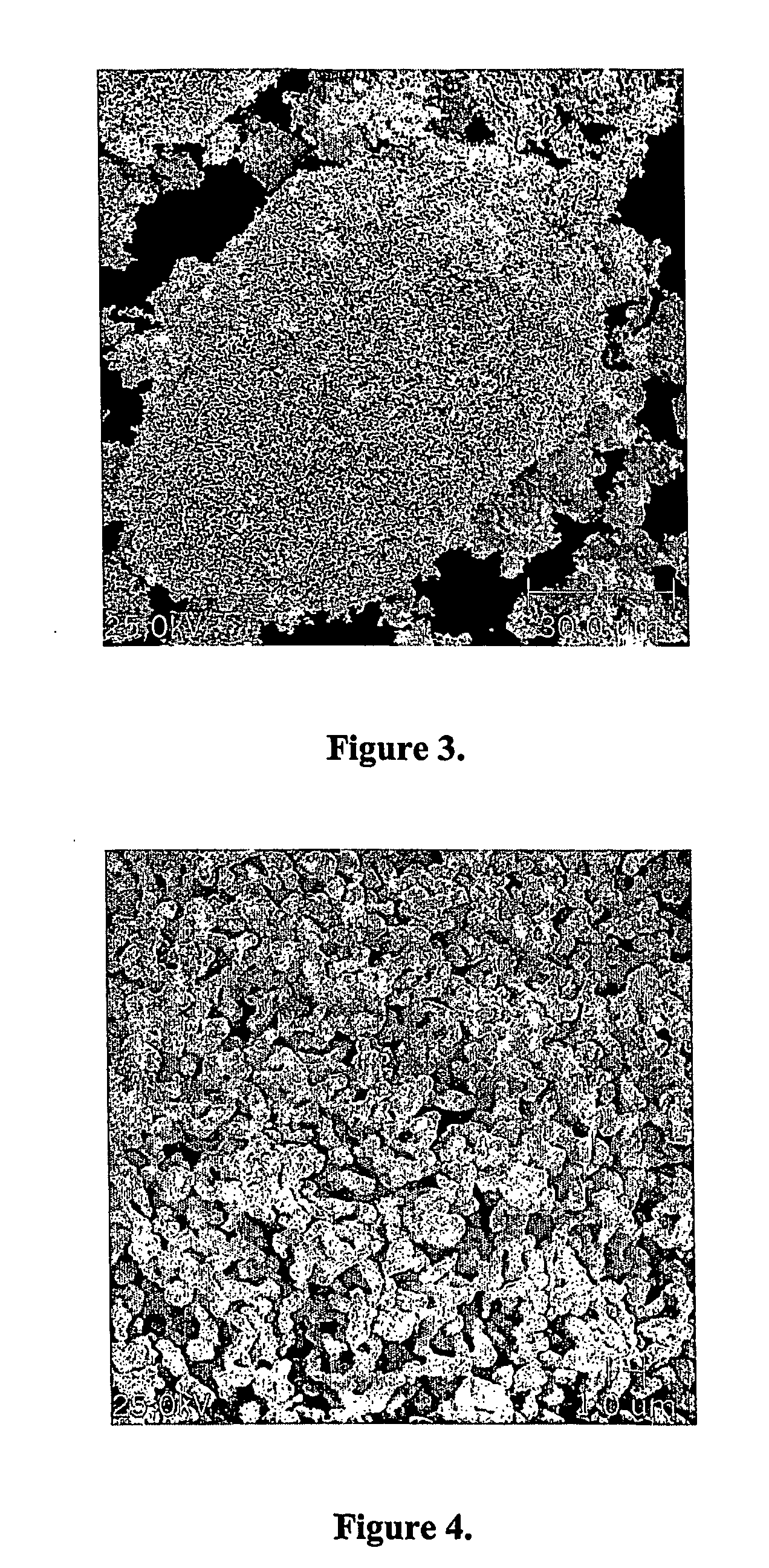Process for the production of niobium oxide powder for use in capacitors
a technology of niobium oxide and niobium monoxide, which is applied in the direction of niobium compounds, inorganic chemistry, electrolytic capacitors, etc., can solve the problems of niobium monoxide, niobium monoxide, and more than one type of niobium oxide, so as to improve the chemical, physical and morphological properties of the product, improve the control of each reducing step, and improve the effect of quality
- Summary
- Abstract
- Description
- Claims
- Application Information
AI Technical Summary
Benefits of technology
Problems solved by technology
Method used
Image
Examples
example 1
[0032] First reduction step: 200 grams of powdered niobium pentoxide were loaded into a tubular furnace. Hydrogen gas was admitted to the furnace chamber, and the furnace temperature was raised from ambient temperature to 800° C. The load was kept at this temperature for 300 minutes, whereupon the heating was turned off. The hydrogen atmosphere was maintained until the load reached ambient temperature, whereupon the furnace chamber was pressurized with nitrogen prior to removal of the load from the furnace. The product of this first reaction step had the following properties:
[0033] X-Ray Diffraction: NbO2
[0034] Specific surface area, BET analysis method: 3.2 m2 / g
[0035] Porosity: 83.8%
[0036] Second reduction step: 6 grams of niobium dioxide, produced in the first reduction step, were loaded into a niobium crucible, together with 34 g of powdered niobium hydride with particle size of less than 0.6 mm and greater than 0.3 mm. The crucible containing the mixture was loaded into the ...
example 2
[0042] First reduction step: 250 grams of powdered niobium pentoxide were loaded into a tubular furnace. Hydrogen gas was admitted to the furnace chamber, and the furnace temperature was raised from ambient temperature to 800° C. The load was kept at this temperature for 150 minutes, whereupon the heating was turned off. The hydrogen atmosphere was maintained until the load reached ambient temperature, whereupon the furnace chamber was pressurized with nitrogen prior to removal of the load from the furnace. The product of this first reaction step had the following properties:
[0043] X-Ray Diffraction: NbO2
[0044] Specific surface area, BET analysis method: 3.5 m2 / g
[0045] Porosity: 84.4%
[0046] Second reduction step: 180 grams of niobium dioxide, produced in the first reduction step, were loaded into a niobium crucible, together with 1000 g of powdered niobium hydride with particle size of less than 0.6 mm and greater than 0.3 mm. The crucible containing the mixture was loaded into ...
example 3
[0052] First reduction step: 1000 grams of powdered niobium pentoxide were loaded into a tubular furnace. Hydrogen gas was admitted to the furnace chamber, and the furnace temperature was raised from ambient temperature to 800° C. The load was kept at this temperature for 90 minutes, whereupon the heating was turned off. The hydrogen atmosphere was maintained until the load reached ambient temperature, whereupon the furnace chamber was pressurized with nitrogen prior to removal of the load from the furnace. The product of this first reaction step had the following properties:
[0053] X-Ray Diffraction: NbO2
[0054] Specific surface area, BET analysis method: 7.0 m2 / g
[0055] Porosity: 80.4%
[0056] Second reduction step: 890 grams of niobium dioxide, produced in the first reduction step, were loaded into a niobium crucible, together with 5000 g of powdered niobium hydride with particle size of less than 0.6 mm and greater than 0.3 mm. The crucible containing the mixture was loaded into ...
PUM
 Login to View More
Login to View More Abstract
Description
Claims
Application Information
 Login to View More
Login to View More - R&D
- Intellectual Property
- Life Sciences
- Materials
- Tech Scout
- Unparalleled Data Quality
- Higher Quality Content
- 60% Fewer Hallucinations
Browse by: Latest US Patents, China's latest patents, Technical Efficacy Thesaurus, Application Domain, Technology Topic, Popular Technical Reports.
© 2025 PatSnap. All rights reserved.Legal|Privacy policy|Modern Slavery Act Transparency Statement|Sitemap|About US| Contact US: help@patsnap.com


